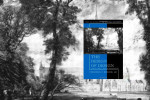Building habit-forming products

Habits are behaviors that occur with little or no conscious thought–“thinking without doing.” Use emotional triggers, actions, and variable rewards to create virtuous cycles of usage for your product.
Hooked: How to Build Habit-Forming Products by Nir Eyal
Hooked provides a design pattern with the building blocks to create habitual behavior. For business models that rely on habits, it’s important to understand how internal and external triggers combine with to initiate action and continue the cycle. Eyal includes discussions of brain physiology, psychology and emotional dynamics in the book to illustrate the foundations of human behaviors and motivations.
A hook is an experience designed to connect a solution to the user’s problem with enough frequency to form a habit.
Vitamins or painkillers?
A habit is when not doing something causes a bit of pain
Habit creating technologies create the need and then provide the remedy
Eyal notes that investors like to ask this question of new products and services because painkiller products, by definition, satisfy an obvious need (stop pain), have a quantifiable market, and are monetizable. Vitamins fill an emotional need and have less well defined market sizes, thereby making them often less attractive.
Eyal characterizes facebook, Twitter, and LinkedIn as vitamins. He then observes that habit forming technologies start out as vitamins, but evolve to be painkillers. Users initially come to the product seeking pleasure or enjoyment; however, over the course of time, a dependency is formed and the product or service becomes a must-have. Many products like Twitter, facebook, and WhatsApp start out as novelties but soon become indispensable.
The hooked framework
Habits aren’t created, they’re built upon
Eyal likens behaviors to pearls–they are slowly built up one layer at a time. The foundational layer of a habit is a trigger.
Triggers
A trigger is “the first step to connecting your solution to the user’s problem with enough frequency to form a habit.” A habit is formed by successive passes through the hooks implemented by products and services.
All triggers cue the next action. With external triggers, the information related to what to do next is contained in the trigger itself. For internal triggers, the information related to what to do next is contained in the user’s mind.
Internal trigger: What do your users really want? What pain is your product relieving? Emotions, particularly negative ones, are internal triggers. How we respond to these emotions form our habits with relation to technology. Technologies provide solutions to negative emotional states–they get us out of pain points.
External Trigger: What brings users to your service? The context for what to do next is in the trigger (alarms, call to action text or button). External triggers are events and signals that tell you what to do. External triggers are the familiar domain for product developers; internal triggers are frequently under utilized.
To take advantage of triggers, complete this sentence: “Every time the user [internal trigger] they use [product].“
For example, Instagram external triggers were initially facebook and twitter, then app notifications and the app icon. The internal trigger is “I want to capture the moment”. Users are mitigating the fear of losing the moment.
Actions
Actions occur when doing is better than thinking
Eyal uses BJ Fogg‘s framework to describe actions. According to Fogg, action occurs when there is sufficient motivation, ability and a trigger all at the same time. An action is the simplest behavior a user can perform to get a reward. Motivators of behavior are either seeking pleasure of avoiding pain. Ability increases or decreases with available resources such as time, money, physical effort, and brain cycles.
It’s important to make the intended action as simple as possible by making it easy to do. Ensure a clear trigger is present and align with the right motivator. Eyal notes that ability (make the experience simpler) is easier to increase than motivation (often telling people what to do). Motivation takes a large investment.
Reward
Eyal discusses scientific evidence that shows variability results in increased focus and engagement. It is habit-forming because humans are fascinated by the unknown.
There are three types of variable rewards: rewards of the tribe, the hunt, and the self. The rewards of the tribe are social and variable: acceptance, cooperation, recognition. The variability in tribal rewards is related to whether or not other people recognize and reward your accomplishments and contributions. The rewards of the hunt are resources: food, money, and information. The variability of information hunting is illustrated in a post or news feed: not everything is interesting, but every so often an interesting story or topic is displayed. The rewards of the self are characterized by sensations: mastery, consistency, completion. The need for mastery can manifest in games or simply getting to inbox zero.
Although variable rewards are powerful, they are not enough. You still have to solve a customer’s pain.
There is no engagement without autonomy
There are several design constraints related to human behavior to keep in mind: autonomy and reactions to predictability. Since people do not want to be controlled autonomy is a pre-requisite for habit-forming design. You cannot railroad users into your preferred habit path.
Finite rewards decay–as rewards become more predictable, they become less effective. Eyal observes that games which allow creation and our real-world social networks are rewarding due to their variability (more so than a game with only one path for instance).
Investment
With product you have to have investment
Labor increases perception of value
During the investment phase the user has to do some work (time, money, effort, social capital). In contrast to the Action phase, which provides immediate rewards; the Investment Phase sows the seeds of future rewards. The investment phase loads the next trigger, stores value and creates preference. Eyal provides any.do as an example: at the end of a scheduled meeting, the app asks you whether there were any action items for you, thereby loading the next trigger. With Pinterest the investment phase consists of likes, pins, and re-pins.
Unlike physical products, habit forming technology products have the opportunity to increase in value over time by storing value which most often comes in the form of data (follows, content, photos, reputation score).
Finally, habit forming technologies create preference. Eyal cites studies which show that as we invest time, we seek to be consistent with past behaviors. This dynamic creates makes habit-based products “sticky”.
The Manipulation Framework
Eyal is sensitive to the fact that addictions are unhealthy habits and wants to use habits for good. To situate your product along the spectrum of healthy habit to destructive addition, Eyal presents the Manipulation Framework to help product designers answer: “Should I attempt to hook my users?”. To align your moral compass, he suggests asking two questions: “Would I use the product myself?” and “Will the product help users materially improve their lives?” With those two answers, you can determine the type of creator you are:
[table caption=”Manipulation Matrix” class=”table table-bordered” tablesorter=”0″]
Conditions, I would not use the product myself, I would use the product myself
Materially improves the user’s life, Peddler, Facilitator
Does not materially improve the user’s life, Dealer, Entertainer
[/table]
Eyal challenges product designers to ask whether their product encourages positive or negative behaviors. The powerful nature of habit-forming products demands a thorough and honest evaluation of values and outcomes.
[youtube=https://www.youtube.com/watch?v=FDtycnZgCfY]
[youtube=https://www.youtube.com/watch?v=oQBsnSC_TRM]







